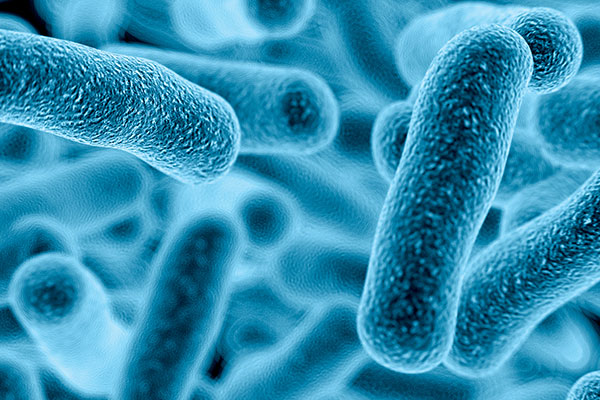We are in the 21st century, and due to technological advancement in the field of medicine, we humans have been able to develop vaccines, antibiotics and other equipment’s we have used to cure many diseases that would have become serious plagues that could have swept more than half of the entire human population we see today.
Also due to this advancements, worldwide life expectancy has increased from about 40 it used to be during the beginning of the 21st century to 70 in our present generation.
Sometimes it’s good to remind ourselves how far we have come, so in this post we will be giving you a list of the top 7 deadly diseases that has been cured by modern science.
1. Tetanus.
Tetanus is an infection characterized by muscle spasms. It is also known as
Lockjaw because the spasms begin in the jaw before they move to other parts of
the Body. Tetanus is caused by an infection with the bacterium Clostridium tetani,
which is commonly found in soil, saliva, dust, and manure.
The bacteria generally
enter through a break in the skin such as a cut or puncture wound by a
contaminated object. They produce toxins that interfere with muscle contractions,
resulting in the spasms. One in 10 cases lead to death. A vaccine prevents it, but it
requires booster shots.
2. Measles.
Measles is commonly recognized by the rash of spots beginning on the face and spreading to the body. It grows in cells in the lungs, which causes cold-like symptoms and can lead to pneumonia .Vaccines that prevent the disease are given to infants and to young children through booster shots.
Once the vaccine is introduced into the body, it produces lifelong immunity to the virus. The vaccine has made it possible to eliminate the risk of measles entirely. However, there are still occasionally cases of it due to negligence in getting the vaccine.
3. Rabies.
First recorded around 4,000 years ago, rabies may represent the oldest infectious disease known to humankind. Rabies is characterised by a reaction in the nervous system, which causes excitement, paranoia, anxiety, confusion and even fear of water.
Another common symptom of rabies is hyper-salivation, or foaming at the mouth. It can be transferred to humans when they come in contact with a rabid animal. Rabies is a zoonotic disease, which means it’s transferred from animals to humans. The anti-rabies treatment with vaccine is completely effective if administered within 14 days of exposure.
4. Polio.
Polio is an infection which when left untreated leads to paralysis and sometimes death. It doesn't have a cure, but the vaccine has prevented the disease from spreading in most countries. Polio is now eradicated throughout most of the developed world.
Since the advent of the polio vaccine, the disease has almost vanished.
According to WHO, in 1988, there were an estimated 350,000 cases of polio globally. In 2013, there were 416 reported cases – a more than 99 per cent decrease in the virus.
5. Small Pox.
In 1980, smallpox was the first disease officially declared to be “eradicated.
Smallpox is an acute contagious disease that primarily attacks the body’s skin cells, leading to bumps all over the body.
Probably one of the most famous diseases ever because of its now basically total elimination from the world, smallpox is a virus spread through human contact. The vaccine was so successful that in 1980 the World Health Organization stopped recommending that people use it.
6. Malaria.
Malaria is one of the most popular diseases in our country today that has been cured by modern science that we have forgotten how deadly it used to be. Malaria is a mosquito-borne infectious disease affecting humans and other animals caused by parasitic protozoans belonging to the Plasmodium type. Symptoms usually begin ten to fifteen days after being bitten. If not properly treated, people may have recurrences of the disease months later.
Malaria causes symptoms that typically include fever, tiredness, vomiting, and headaches. In severe cases it can cause yellow skin, seizures, coma, or death. The disease is most commonly transmitted by an infected female Anopheles mosquito. The mosquito bite introduces the parasites from the mosquito's saliva into a person's blood. The parasites travel to the liver where they mature and reproduce.
Once infected, there are antimalarial drugs available – as well as medication that can be taken before traveling to high-risk areas – but no vaccine
7. Yellow Fever.
Yellow fever is a tropical virus, spread by mosquitoes. It affects the liver and kidneys, causing fever, jaundice, and loss of appetite, chills, muscle pains and headaches.
It can eventually lead to liver disease but there is a vaccine for people who are traveling in those areas and are at risk. It is called yellow fever because in severe cases people turn yellow also known as jaundice.
WHO regulations cite vaccination as the single most important measure for preventing yellow fever. A yellow fever vaccine has been used commercially since the 1950’s. It is safe, effective and provides immunity within one week in 95 per cent of those vaccinated.
In 2013, WHO concluded that one dose of yellow fever vaccine is sufficient to protect against the disease for life.
Source: http://www.geneith.com/2018/03/7-deadly-diseases.html 
|